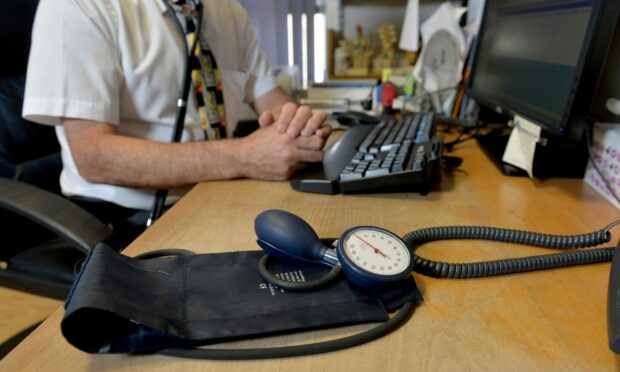One in four Scottish GPs could quit within the next two years leaving the country in a “bleak situation”, ministers have been warned.
A survey by the British Medical Association (BMA) of GPs in Scotland found just one in 20 of those who responded believe their practice is in a long-term sustainable position.
Meanwhile, three out of five said they feared for the future of their practice if it was to lose a GP.
Tayside and Fife has seen long-term decline in GP services, with fewer doctors looking after a growing number of patients.
Closures and takeovers by NHS Tayside and other health board have been blamed on an inability to recruit new doctors, meaning practices are forced to close as long-serving GPs retire or move on.
Urgent action needed, GP leader warns
BMA Scotland GP chair Dr Andrew Buist warned without “urgent action” parts of the country could “become seriously under-doctored”, resulting in patients struggling “even more than they are right now to get appointments”.
The Blairgowrie based medic said: “The Scottish Government must take this situation seriously and show greater willingness for increased investment in core general practice services to maintain stability.”
As well as “concerted action” to recruit more GPs, he said there must also be action to retain existing doctors.
“It is no good recruiting 20 if you lose 25 in the process,” he said.
His comments came as the survey showed 43% of GPs in Scotland believe there is no realistic chance in the near future of their practice being able to meet patient demand for access, according to the survey.
The survey reflect the situation in Fife, where The Courier revealed how four GP vacancies at one practice had attracted zero applicants in three years.
Valleyfield Health Centre, near Dunfermline, has been forced to rely on temporary staff since 2020.
Quarter of doctors say they will quit
Dr Buist said the situation was “bleak” as existing doctors fear things will only get worse, with a quarter saying they will leave their practice in the next two years.
He said: “That paints a very worrying picture for the future of GP services.”
Calling for action from the Scottish Government, he said there needed to be a “proper funding uplift”, alongside an “urgent review” of the target set by ministers to recruit an additional 800 GPs by 2027.
This work is needed to see the “progress or lack of” towards the target and “what must be done to get us back on track”, Dr Buist said.
A Scottish Government spokesperson said: “We have delivered a record number of GPs working in Scotland, with more per head than any other country in the UK, and we are making good progress on our commitment to recruit at least 800 new GPs by 2027.
“Since 2017, Scotland’s GP headcount has increased by 291 to a record high of 5,209 in 2022.”
They added: “To support general practice we currently have 4,731 staff working in multi-disciplinary teams providing services including physiotherapy, pharmacy and phlebotomy, giving an average practice access to more than five additional multi-disciplinary team members.
“We continue to support development of these teams through our investment of £170 million per year in the Primary Care Improvement Fund.”


